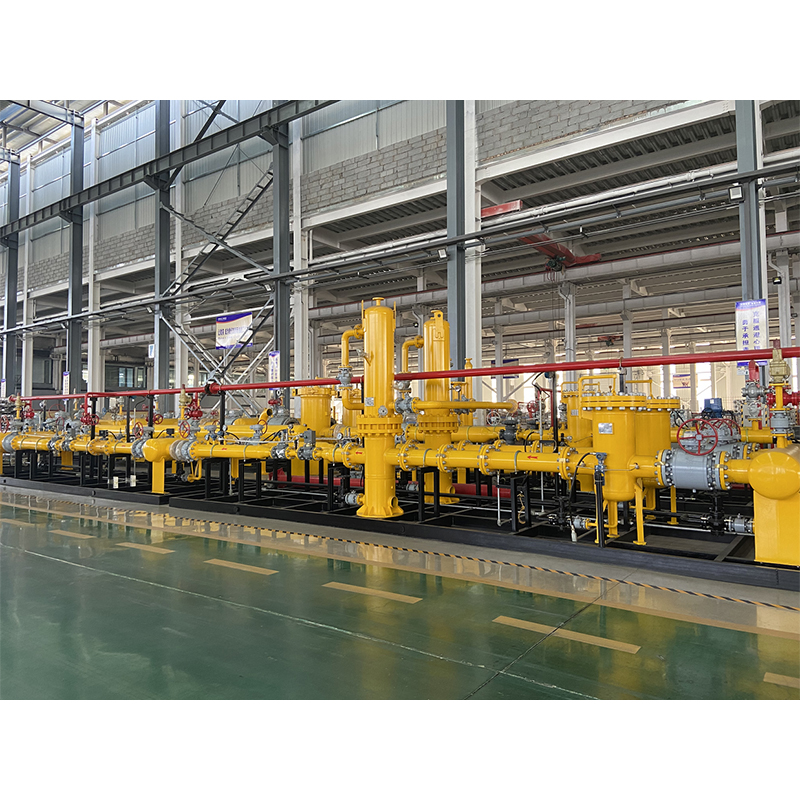
Nov . 19, 2024 06:36
Back to list
gas regulator
Understanding Gas Regulators Essential Components for Safe Gas Supply
Gas regulators play a crucial role in the safe and efficient use of gas in various applications, ranging from residential heating to industrial processes. These devices ensure that gas is delivered at a stable and safe pressure, preventing accidents and failures that can arise from over-pressurized gas lines. In this article, we will delve into the key functions of gas regulators, their types, and why they are essential for both safety and efficiency.
What is a Gas Regulator?
At its core, a gas regulator is a mechanical device that controls the pressure of a gas supply to ensure that it is reduced to a safe and manageable level. Gas can enter a regulator at a higher pressure—often coming from a gas main or a tank—and the regulator reduces this pressure to a predetermined level that is safe for use in appliances like stoves, heaters, or industrial machinery.
The regulating mechanism typically consists of a diaphragm that responds to changes in pressure, allowing it to maintain a constant output pressure despite variations in the input pressure or demand for gas. This stability is crucial as fluctuations can lead to equipment malfunction, inefficient energy usage, or hazardous situations.
Types of Gas Regulators
Gas regulators come in various types, each designed for specific applications and pressures
. Here are some common types1. Single-Stage Regulators These are simple devices that reduce high pressure to a lower pressure in one step. They are commonly used in residential applications where the flow requirements are straightforward.
2. Two-Stage Regulators These devices provide more precise control over pressure and are typically used in more complex systems. The first stage reduces the incoming pressure to a manageable level, while the second stage fine-tunes the output pressure. This configuration is ideal for applications requiring consistent pressure, such as industrial processes.
3. Back Pressure Regulators These regulators maintain a specific upstream pressure by allowing gas to escape when the pressure exceeds a predefined level. They are commonly used in manufacturing settings where maintaining a certain pressure is critical for process integrity.
gas regulator

4. Electronic Regulators With advancements in technology, electronic gas regulators are becoming more popular. They utilize sensors and feedback systems to monitor and adjust gas pressure automatically, offering higher precision and the ability to integrate with smart systems.
The Importance of Gas Regulators
Gas regulators are essential for several reasons
- Safety One of the primary functions of a gas regulator is to prevent accidents. By controlling gas pressure, regulators protect appliances and prevent leaks that could lead to explosions or fires.
- Efficiency Regulators help maintain a steady flow and pressure of gas, which results in better performance of appliances. This efficiency not only saves money on energy bills but also reduces wear and tear on equipment.
- Regulatory Compliance Many jurisdictions require specific pressure regulation for gas appliances to comply with safety standards. Properly functioning regulators ensure compliance with these regulations, preventing legal issues for businesses and homeowners alike.
- Environmental Considerations Efficient gas usage can also have environmental benefits. By ensuring that gas is used effectively and reducing waste, regulators contribute to lower emissions and a smaller carbon footprint.
Conclusion
In summary, gas regulators are integral components of any gas supply system, ensuring that gas is delivered safely and efficiently. Their ability to maintain stable pressures not only protects users from potential hazards but also enhances the performance and longevity of gas-operated appliances. As we continue to rely on gas for various applications, understanding and properly maintaining gas regulators will remain essential for safety and efficiency in our homes and industries alike. Whether you're a homeowner or a business operator, recognizing the importance of these devices is a step towards fostering a safer and more sustainable future.
Latest news
-
Safety Valve Spring-Loaded Design Overpressure ProtectionNewsJul.25,2025
-
Precision Voltage Regulator AC5 Accuracy Grade PerformanceNewsJul.25,2025
-
Natural Gas Pressure Regulating Skid Industrial Pipeline ApplicationsNewsJul.25,2025
-
Natural Gas Filter Stainless Steel Mesh Element DesignNewsJul.25,2025
-
Gas Pressure Regulator Valve Direct-Acting Spring-Loaded DesignNewsJul.25,2025
-
Decompression Equipment Multi-Stage Heat Exchange System DesignNewsJul.25,2025

